
The Archdiocese of Ancona–Osimo is a Latin Church ecclesiastical territory and metropolitan see of the Catholic Church in the Marche region of Italy.
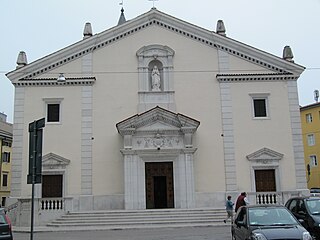
The Archdiocese of Gorizia (Latin: Archidioecesis Goritiensis is a Latin archdiocese of the Catholic Church in Italy. The archiepiscopal see of Gorizia was founded in 1751 when the Patriarchate of Aquileia was abolished, and its territory divided between two new dioceses, Udine and Gorizia. The diocese of Gorizia was suppressed in 1788 for the creation of the Diocese of Gradisca and re-established in 1791 as the Diocese of Gorizia e Gradisca. It was raised again to a metropolitan archdiocese in 1830.

The Archdiocese of Otranto is a Latin archdiocese of the Catholic Church in Italy. The seat of the diocese is at Otranto Cathedral in the city of Otranto, Apulia. It is a suffragan of the archdiocese of Lecce.
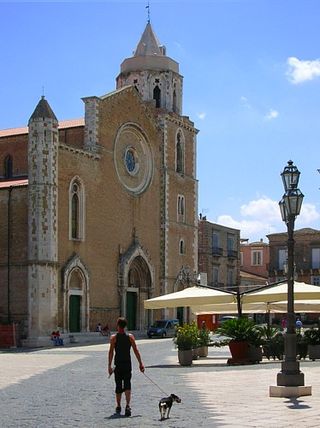
The Diocese of Lucera-Troia, sometimes called Nocera, is a Latin diocese of the Catholic Church in Apulia, in southern Italy, with its episcopal seat at Lucera Cathedral. The diocese reached its present configuration in 1986, by combining the older diocese of Lucera with the diocese of Troia, the seat of which was Troia Cathedral, now a co-cathedral of the united diocese.

The Archdiocese of Manfredonia–Vieste–San Giovanni Rotondo is a Latin Church non-Metropolitan Archdiocese of the Catholic Church in the civil province of Foggia, in Apulia, south-eastern Italy, which is part the ecclesiastical province of the Metropolitan Archdiocese of Foggia-Bovino

The Diocese of Bovino is a Latin Church diocese of the Catholic Church in the civil province of Apulia, southern Italy. It is 23 mi (37 km) southwest of Foggia. It was established in the tenth century, and was a suffragan of the archdiocese of Benevento. In 1986 it was merged into the Archdiocese of Foggia-Bovino. In 1980, the diocese claimed 23,500 adherents, served by 26 priests.

The Archdiocese of Lecce is a Latin Church ecclesiastical territory or archdiocese of the Catholic Church in Apulia, southern Italy. The diocese has existed since the 11th century. On 28 September 1960, in the bull Cum a nobis, Pope John XXIII separated the diocese of Lecce from the ecclesiastical province of Otranto and made it directly subject to the Holy See. In the bull Conferentia Episcopalis Apuliae issued on 20 October 1980, Pope John Paul II created the ecclesiastical province of Lecce, with the Archdiocese of Otranto becoming a suffragan diocese.

The Archdiocese of Sant’Angelo dei Lombardi–Conza–Nusco–Bisaccia is a Latin archdiocese of the Catholic Church in Campania. It has existed since 1986. It is a suffragan of the archdiocese of Benevento.
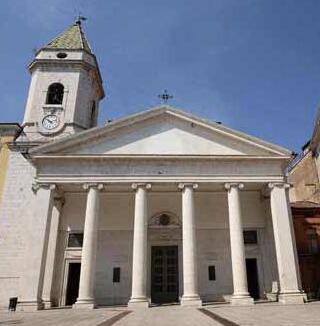
The Archdiocese of Campobasso-Boiano is a Latin Church archdiocese of the Catholic Church in the commune of Campobasso, the capital of the province of Campobasso, in the region of Molise in Southern Italy. It became an archdiocese in 1973 and a metropolitan see in 1976.
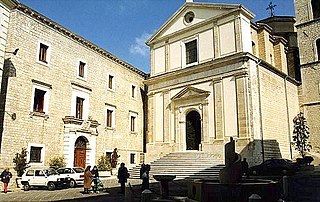
The Archdiocese of Potenza-Muro Lucano-Marsico Nuovo is a Latin diocese of the Catholic Church in Basilicata, southern Italy, created in 1986. In that year the Diocese of Muro Lucano was united into the Archdiocese of Potenza e Marsico Nuovo, which had been elevated to an archdiocese in 1973, and made a metropolitan see in 1976. The historical Diocese of Potenza was united with the Diocese of Marsico Nuovo in 1818.

The Diocese of Cerignola-Ascoli Satriano is a Latin diocese of the Catholic Church in Apulia. It has existed under this name since 1986. Its bishop has been a suffragan of the Archbishop of Foggia-Bovino since 1979.
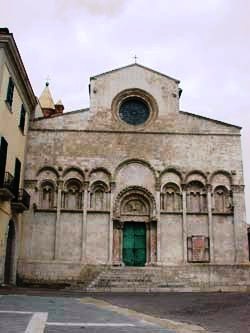
The Diocese of Termoli-Larino is a Latin Church diocese of the Catholic Church situated in the province of Campobasso, region of Molise. The commune of Termoli is an important regional seaport. The diocese has existed in its current configuration since 1986, when the diocese of Larino was suppressed and added to its territory. It is a suffragan of the archdiocese of Campobasso-Boiano.

The Italian Catholic diocese of Cariati, in Calabria, existed until 1979. In that year it was united into the archdiocese of Rossano-Cariati. The diocese was a suffragan of the archdiocese of Santa Severina, and then of the archdiocese of Reggio Calabria. In 2001, it became a suffragan of the Archdiocese of Cosenza-Bisignano.

The Diocese of Fabriano-Matelica is a Latin Church diocese of the Catholic Church in the Marche has existed under this name since 1986. It is a suffragan of the archdiocese of Ancona-Osimo.

The Diocese of Diano (Teggiano)–Policastro (Latin: Dioecesis Dianensis-Policastrensis), is a Latin Church diocese of the Catholic Church in Campania, has existed since 1850, under its present name since 1986. In that year the Diocese of Diano (Teggiano) was united with the diocese of Policastro.

The Diocese of Tursi-Lagonegro is a Latin diocese of the Catholic Church in Basilicata, southern Italy. It is a suffragan of the Archdiocese of Potenza-Muro Lucano-Marsico Nuovo.
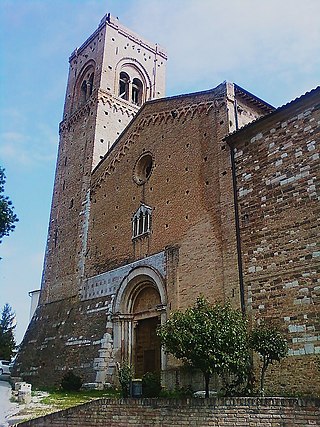
The former Italian Catholic Diocese of San Severino, in the Province of Macerata, Marche in Central Italy, existed until 1986. In that year it was united into the Archdiocese of Camerino to form the Archdiocese of Camerino-San Severino Marche.

The Italian Roman Catholic diocese of Acquapendente was an ecclesiastical territory in Lazio. The seat of the bishop was in the cathedral of Acquapendente, dedicated to the Holy Sepulchre. The diocese was established in 1649, when it was created in the place of the suppressed diocese of Castro. In 1986, along with other dioceses, it was merged into the diocese of Viterbo, Acquapendente, Bagnoregio, Montefiascone, Tuscania e San Martino al Monte Cimino.

The Diocese of Montalto was a Latin Church ecclesiastical territory or diocese of the Catholic Church located in the town of Montalto delle Marche in the Province of Ascoli Piceno in the Italian region Le Marche. The diocese was erected in 1586 by Pope Sixtus V, a native of the town. The diocese was suppressed in 1986, and its territory was assigned to a new entity, called the Diocese of San Benedetto del Tronto–Ripatransone–Montalto.
The Diocese of Satriano e Campagna was a Roman Catholic diocese located in the town of Satriano in the Province of Catanzaro in the Calabria region of southern Italy. In 1818, the diocese of Campagna was united with the Archdiocese of Conza to form the Archdiocese of Conza e Campagna. The diocese of Satriano was completely suppressed, and its territory incorporated into the diocese of Campagna.





















